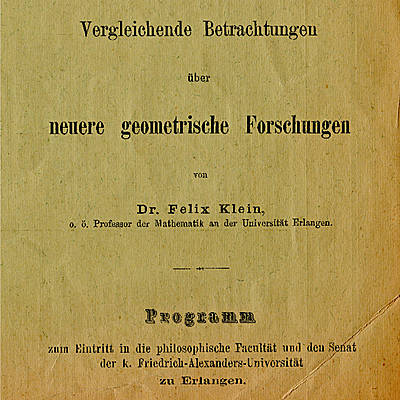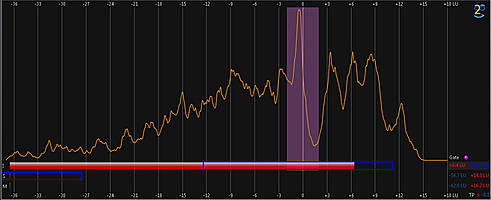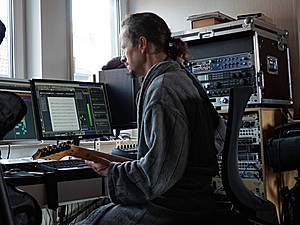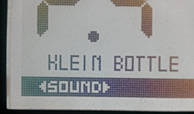Erlanger Programm

In 1872, Felix Klein presented his Programmschrift Vergleichende Betrachtungen über neuere geometrische Forschungen to describe his intended research focus as part of his tenure as a professor for mathematics at Universität Erlangen. This text is hence known for short as Erlanger Programm.
Twelve to the power of two years later, Rainer Straschill presents an album of music by the same name.
Erlanger Programm
Moving through nearly 45 minutes of music composed attacca (i.e. without any pause in between), a set of basic themes, progressions and structures weave into each other, on the way moving through many different stylistic areas. The album is a rollercoaster ride through symmetry in cross- and auto-referentialisms, translation invariances (or lack thereof), and leitmotifs lacking extramusical narratives - along the way racing through a vast bandwidth of tempi, volume levels and stylistic misfits.
There's mostly synthesizers (again), but also electric and acoustic instruments (the melodica makes a return as a virtuoso instrument in D), and all in all great variety.
As a special schtick, the work nods its head to its namesake by using loops, as all of the upper-case-named parts, as well as the album as a whole, can work both in their immediate context, but also as endless, strange loops.
This trickery and variety comes at a price, however: due to the wide stilistic spectrum, the often rather angular musical language, and let's not forget the Wagnerian dynamic range, this album is best enjoyed by someone with love for breakbeats, minimal, dub, bebop, progressive rock, synthpop, abstact noise, acoustic pop, and enjoyed in a very quiet and attentive listening environment.
In Summary
The target audience for this album can reasonably be assumed to be an empty set {}. Feel free to challenge and disprove that statement.
An Engineering Note to the Casual Listener
Once again, it's time for my Dynamic Range listening recommendations.
The dynamic range here is huge. While it's K-14 by Katz's K system (meaning a forte passage is circa -14dB RMS, or +9dB LU), the album also goes up to fff, and down to about ppppp - which makes the album almost unlistenable.
Still, here's some recommendations (originally written for the Wie groß ist die Luft? album, but which hold for any moinlabs album):
- Listen attentively on a high-quality stereo system in a proper (quiet) listening environment. Cleaning the dishes while listening to this album playing on a cheap radio in the other room is not a good idea.
- For a proper listening level: the beginning of A is assumed to be mezzoforte (which is a step below "loud", i.e. not very loud).
- Sudden jumps in loudness can be startling. In other words: don't handle things which can get damaged or damage you or others while listening to this music.

How to get it
The album is available as a digital album download from bandcamp via the player on the left, or directly here.
Download includes a nifty booklet, and lossless versions (FLAC) are in full 24/48 audiophile glory (which you should get - remember that talk about dynamic range before?)
This time, the price is non-zero. More specifically, it's Euler's number.
Credits & Acknowledgements

The text on the front cover is a copy of Felix Klein's original work (and has since moved to the public domain).
The photograph of a Klein Bottle in the booklet is, and a license for it has been courteously granted, by Svein Halvor Halvorsen.
The rest of this Gesamtkunstwerk is by Rainer Straschill.



